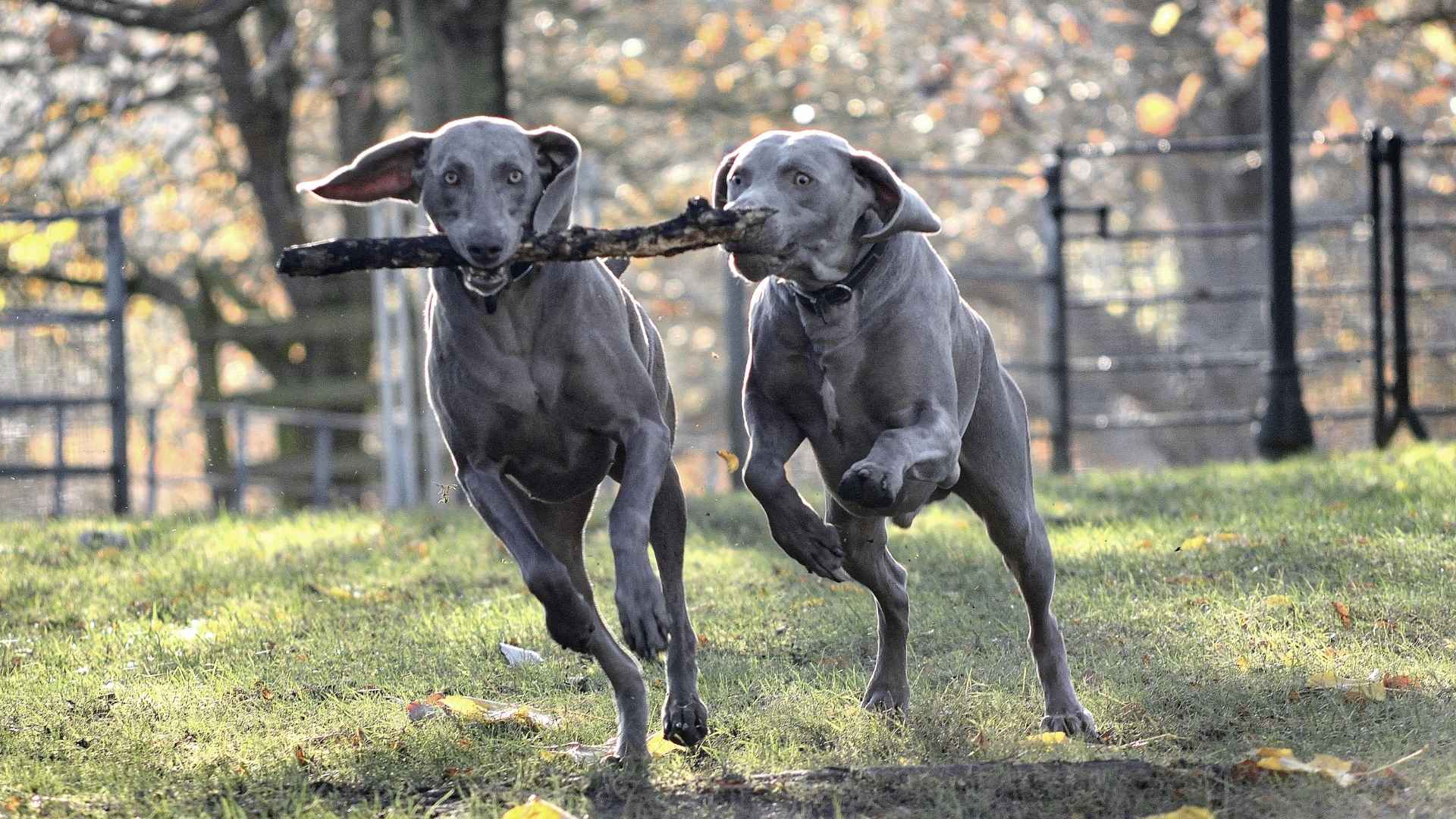You’re walking through the neighborhood when a dog passes by that makes you do a double-take—not because it’s huge or wearing a silly sweater, but because its fur looks like fog on a chilly morning. That cool, soft, blue-grey color? It’s not just pretty—it’s genetic.
Some dogs are born with what’s called a dilute gene (specifically at the D locus), which turns normally dark coats like black or brown into this dreamy steel-grey shade that people often call “blue.”
Blue‑tinted grey coats are rare, but legendary. Dogs with these coats often get nicknames like Silver Ghost, Mist Wolf, or Ghost Pup online for good reason. They’re elegant, mysterious, and undeniably Instagrammable—just don’t call them smurfs.
Breeds like the Weimaraner and Great Dane strut this hue naturally, while others like Poodles and Old English Sheepdogs can be dyed or modified, though genetics still rule most of the look. This sheen is the result of pigment dilution: melanin gets scattered in the fur, softening dark tones into a glowing grey.
So, let’s sit back and dive into 9 dog breeds with blue-tinted grey coats.
Dog Breeds With Blue-Tinted Grey Coats
1. Weimaraner
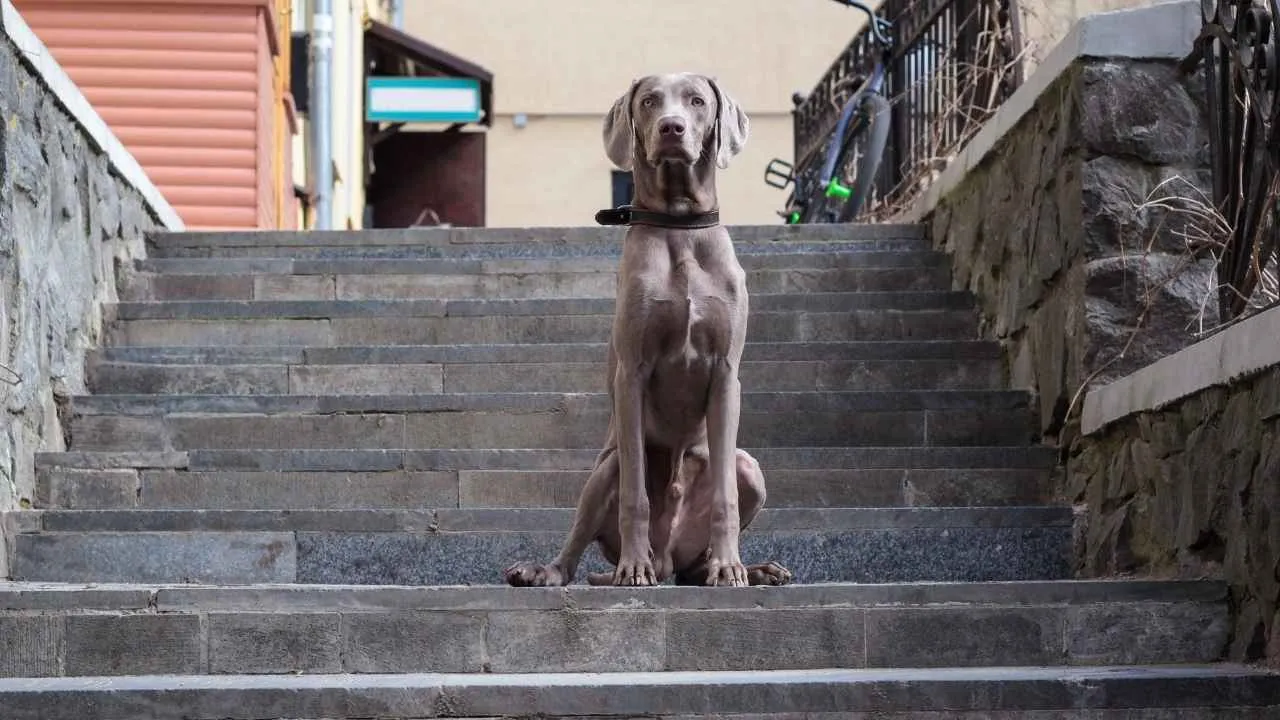
Known as the “Silver Ghost,” this blue dog breed sports a sleek gray coat with steel blue undertones, thanks to coat dilution. Genetically, blue Weimaraners carry a diluted black pigment (B allele) combined with a dilution gene (d/d), producing that iconic rare blue‑grey hue.
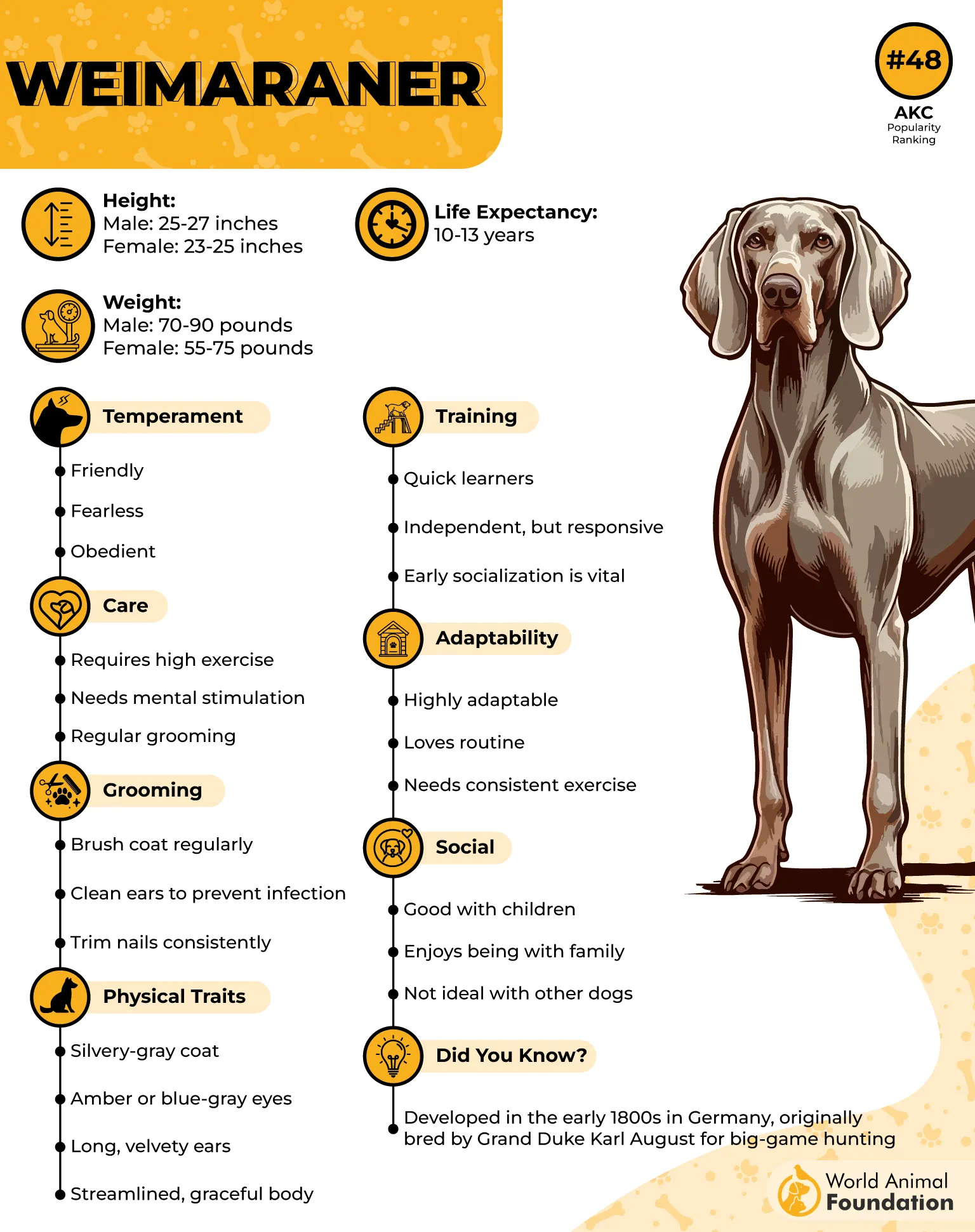
Some Weimaraners—especially the blue variant—display a solid dark charcoal-grey or slate coat. According to genetic coat-color studies, this dark gray coat is owing to a black pigment that is diluted, producing a much darker grey than the typical lighter silver or mouse-grey.
These hunting dogs from Germany were bred in the 19th century for bird retrieval. Their blue-gray fur matched early hunting attire and foggy forests, adding camouflage flair.
Science says these dogs have high VO₂ max, loads of stamina, and smart brains—built to run and think. Nothing says “fast and focused” like a Weim flushing birds with its glacier-grey coat glowing in the morning light.
They’re muscular, athletic, and move like liquid metal.
2. Great Dane
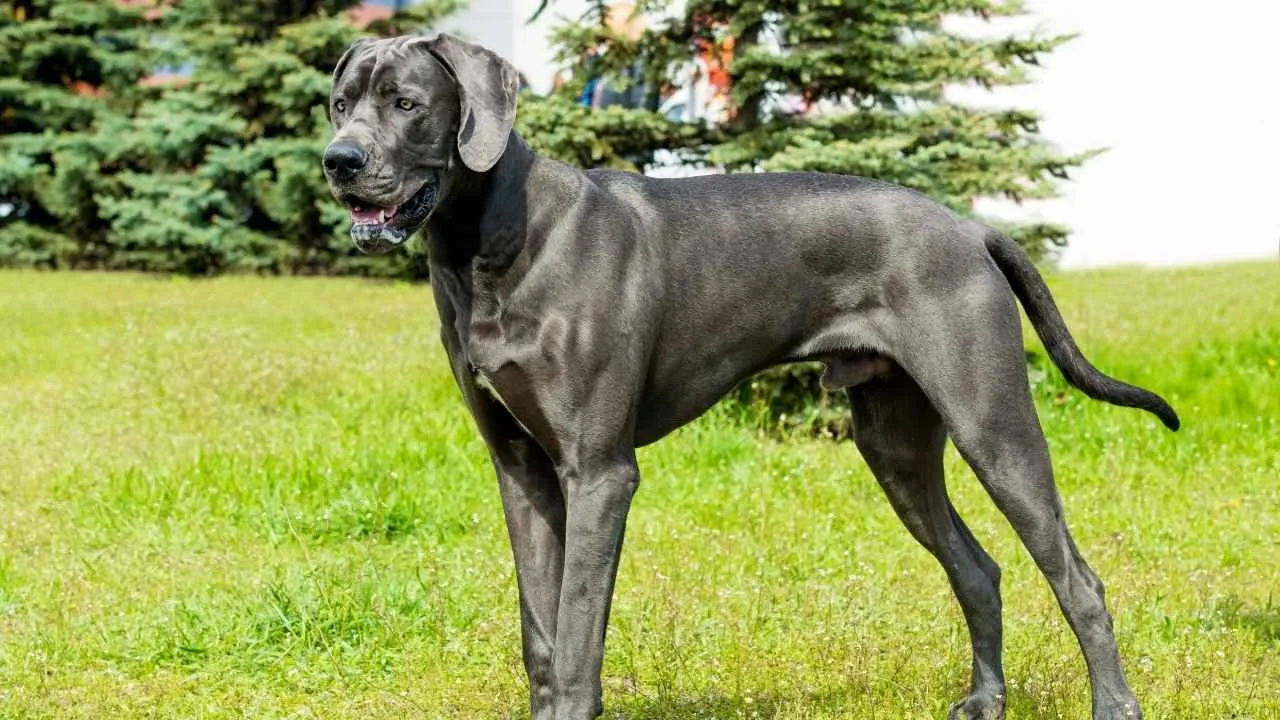
Great Danes often come in harlequin or fawn, but the blue coat variety is absolutely stunning—a solid bluish‑grey with velvet sheen. Blue Danes occur when the same dilution gene (d/d) lightens black pigment into a slate tone. With their height and this coat, they’re like walking statues of sleek power.

These gentle giants were originally bred in Germany for boar hunting but evolved into regal companions. The blue coat added mystique, kind of like a medieval knight in armor. Despite their size, blue Danes have surprising elegance and often appear in film and fashion due to their striking looks.
Anatomically, they pack lean musculature beneath that silky coat, making their movement look smooth and calm, even though they weigh 100+ pounds. Their temperament is mellow yet alert, so they look imposing but are true teddy bears.
Online, some folks joke that their blue Dane “could win a Blue Blood awards show.” But scientifically? Blue is a dilute black pigment, genetically rare, giving them that glamorous steel‑blue look without sacrificing personality.
3. American Staffordshire Terrier
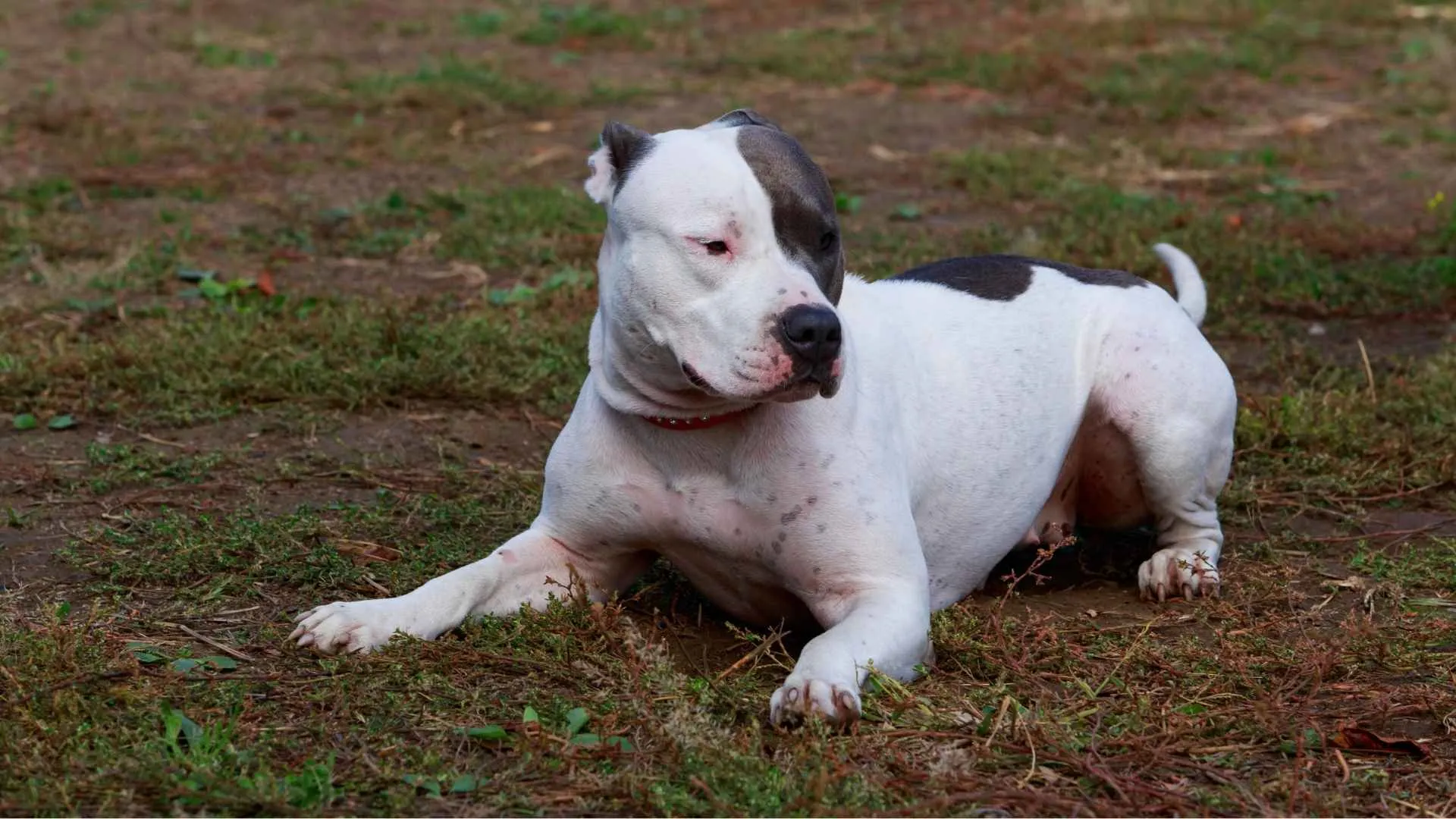
Am Staffs can be found in blue‑tinted grey coats too—think classic pit‑bull body with a smoky sheen. That’s dilute gene magic working again, turning black pigment soft. Not every Staff member can pull it off, but those who do look like urban guardians from a futuristic comic book.
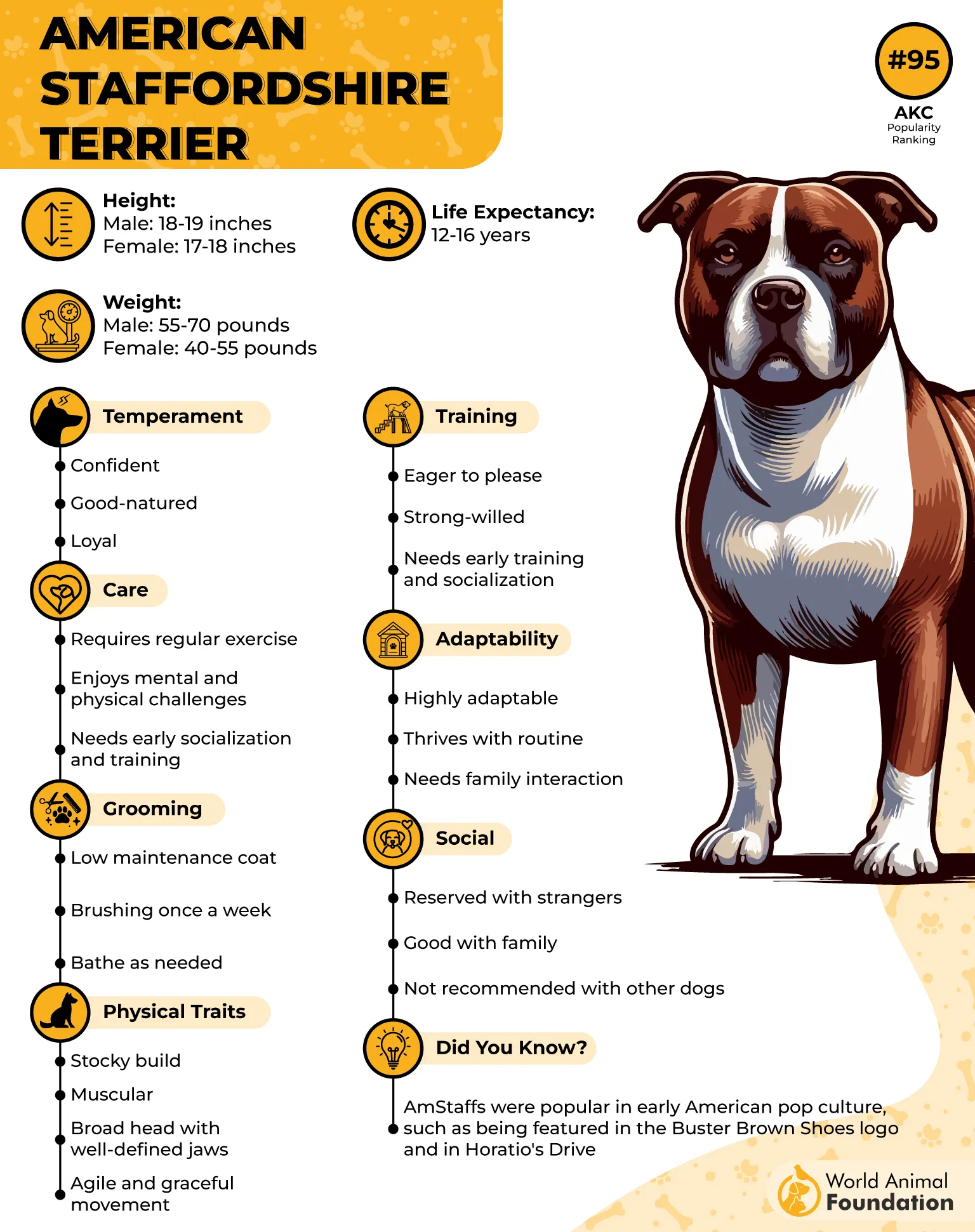
These dogs with blue brindle were originally bred in America for farm work and dog sports. They combine strength, agility, and loyalty—all wrapped in a sleek, short, blue‑grey coat. The hue often highlights their muscular build, showing every contour like a sculpted hero.
Scientifically, Staffordshire Terriers have powerful bite forces, fast-twitch muscles, and a steady temperament. A blue AmStaff standing tall looks intimidating, but they’re famously “nanny dogs” with kids and family members.
A notable modern reference: some viral dog competition winners sport this coat, making the breed popular on social media. Their sheen shows off mobility and health, humanizing a breed once mischaracterized.
4. Blue Lacy
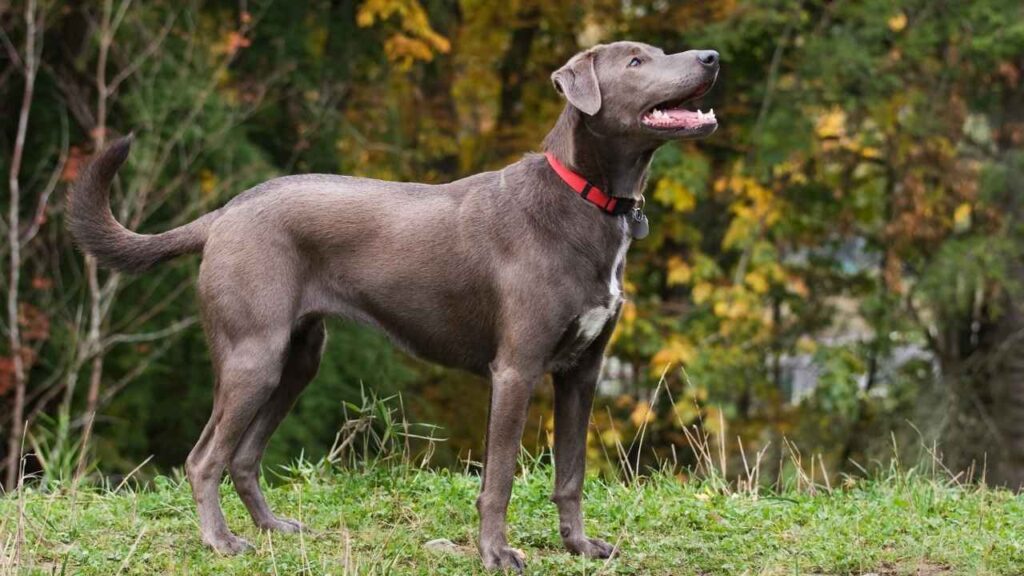
The Blue Lacy is the official state dog of Texas, and yes—they come in blue‑tinted grey coats ranging from silvery‑charcoal to pale steel. The “blue” name reflects this range exactly. They were bred in mid-19th-century Texas for hog hunting, herding, and tracking game, and their coat helped with heat camo and grit.
These dogs wearing blue-gray coats are lean, fast, and have incredible stamina. Their coat sheds minimally and needs little grooming—a real ranch favorite. PetMD mentions their blue skin tones may occasionally lead to color dilution alopecia, but only rarely.
Behaviorally, Blue Lacy is insanely driven, working dogs—tracking, treeing, trailing—all with that grayscale intensity. They fit right in tracking wild hogs under scorching Texas sun, blending into scrub and dust.
A fun historical fact: the Lacy family donated pink granite from their ranch to build the Texas State Capitol—and their blue dogs were the original ranch guardians of that same land. Big history, bigger coat.
5. Thai Ridgeback
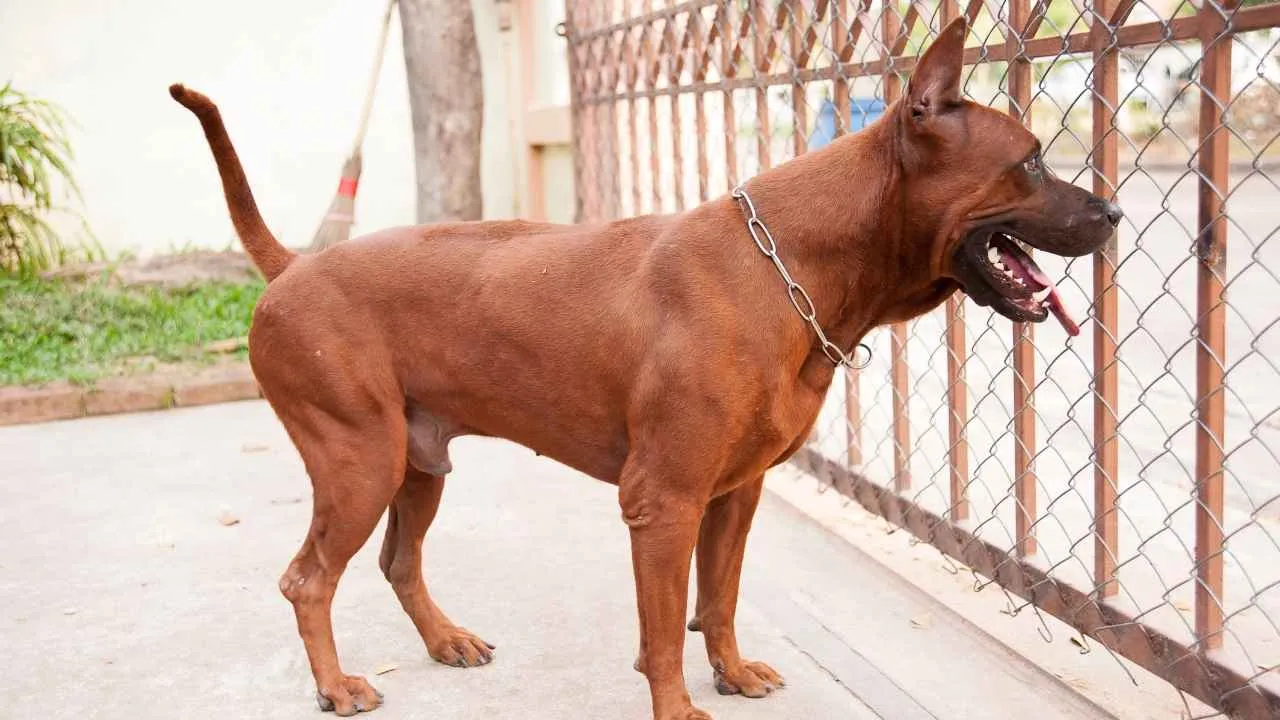
Thai Ridgebacks rarely show up in Petco, but some sport a diluted grey coat that appears bluish, especially when light hits the ridge. Though standard colors are red, black, or blue (registered), their grey-blue tints stem from dilution genes. These dogs originated in Thailand centuries ago as hunting guardians and co‑family protectors.
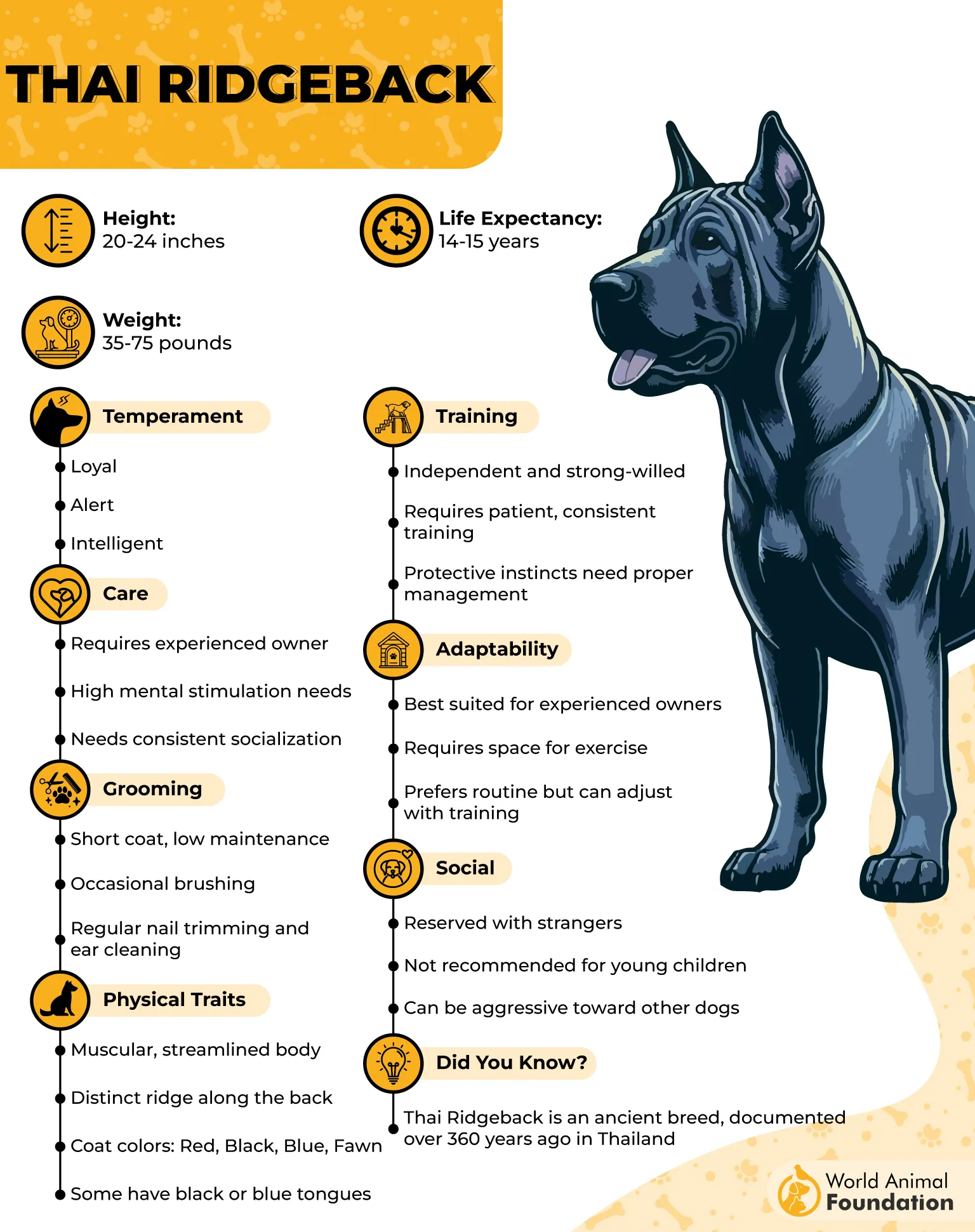
They’re lean, muscular, and have a ridge of hair along their back that grows opposite the rest of the coat. That feature, combined with a smoky coat, gives them a fierce, mythical look, as though they’re from a temple legend.
Genetically, these solid blue coated dogs have low body fat, high endurance, and sharp senses. Blue‑grey Thai Ridgebacks often have lighter eyes and noses, like an icy aura.
They’ve gained fans in exotic dog communities for their unique visuals and historical ties. Their mythic look on social media makes them instant legends.
6. Italian Greyhound
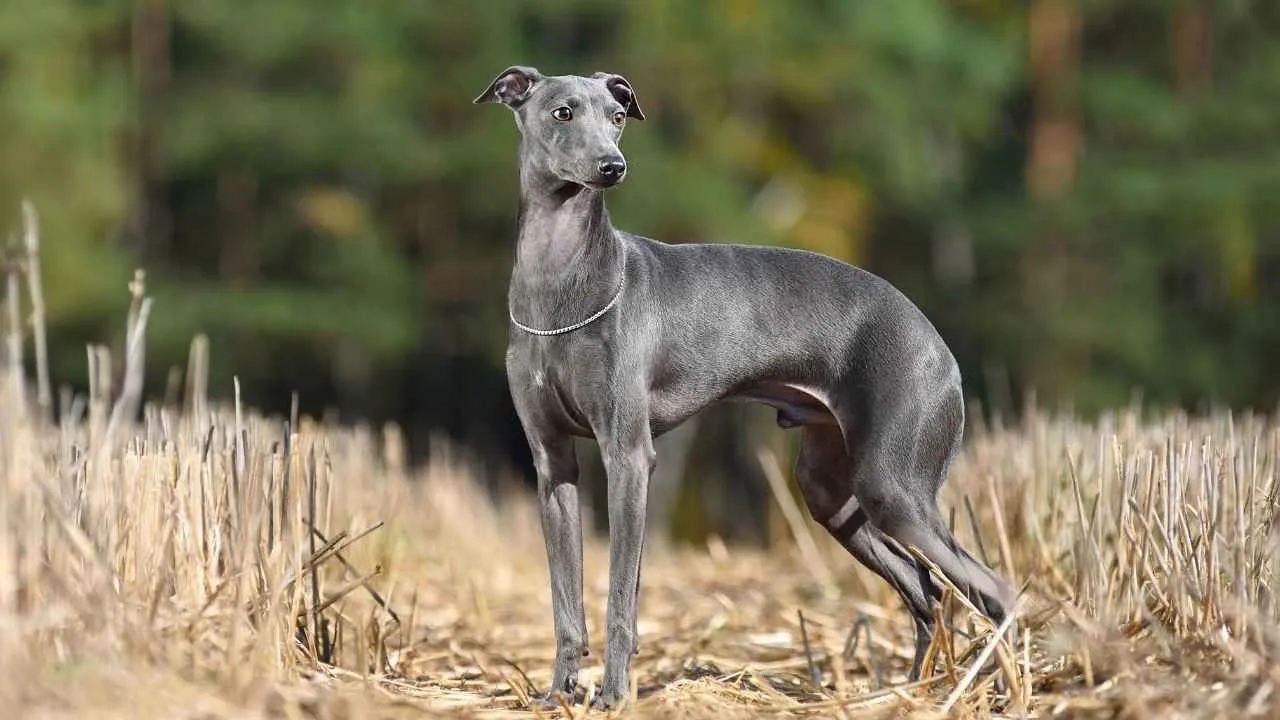
Miniaturized elegance—with blue‑tinted grey coats that shimmer like graphite. Italian Greyhounds sometimes manifest dilute black genetics, giving them a sleek steel‑grey coat. These puppies look like pencil lines come to life.
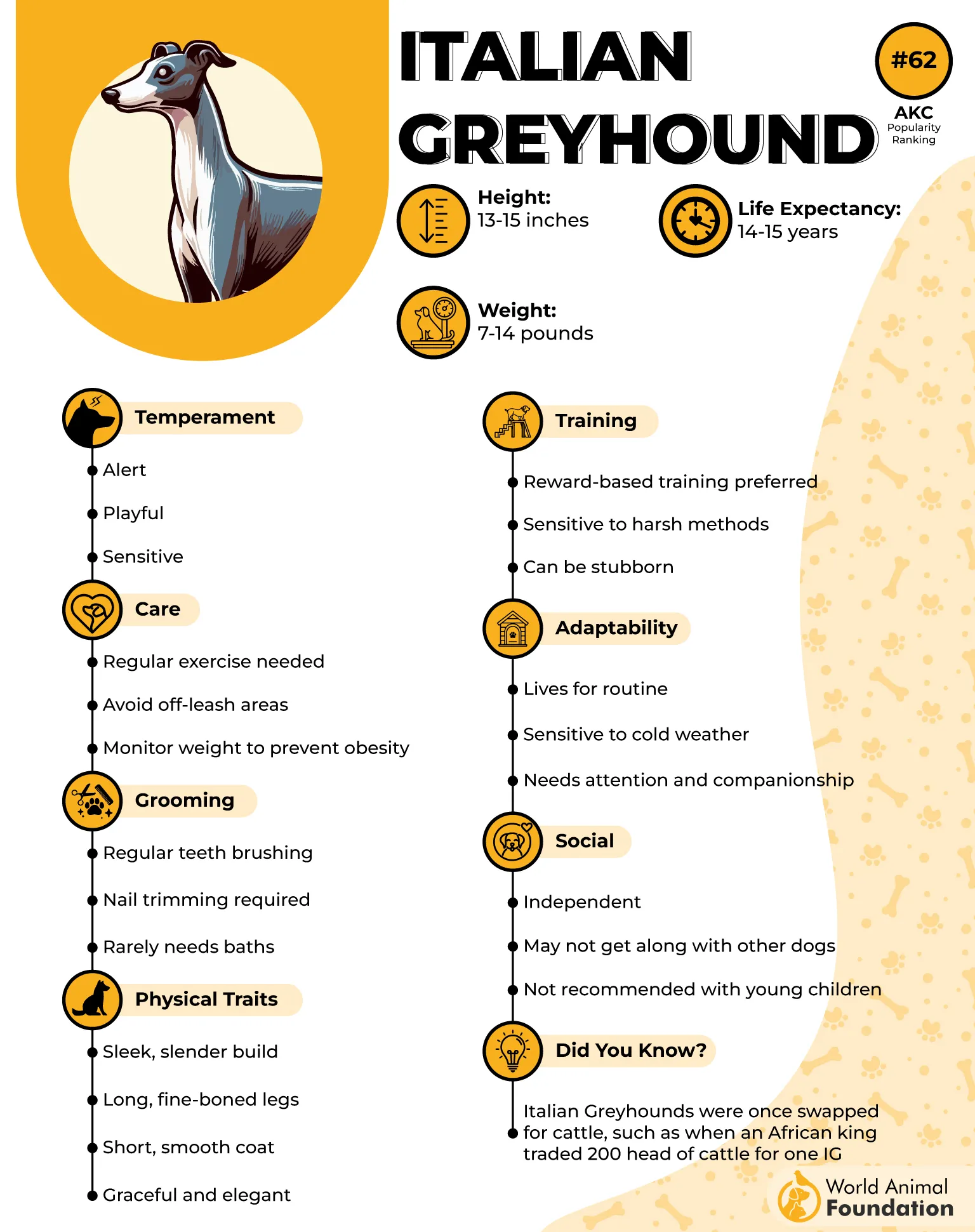
These sighthounds come from ancient Rome and Greece, and were used to chase small prey in warm climates. Their coats were bred to lie close to the body, reflecting heat but also showing off muscle tone—blue-grey looks especially regal in sunlight.
Physiologically, they have high agility, flexible spines, and efficient bodies. The grey‑blue coat accentuates their silhouette, making you stare before you blink.
Fun modern fact: fashion influencers often feature blue IGs in photo shoots because of their statuesque film‑star look.
7. Staffordshire Bull Terrier

Staffies often overlap with AmStaffs, but UK Staffords also come in blue‑tinted grey coats. They share the same color dilution genes and muscular build, giving them a glossy pale‑steel shade that contrasts sharply with warm brown eyes.
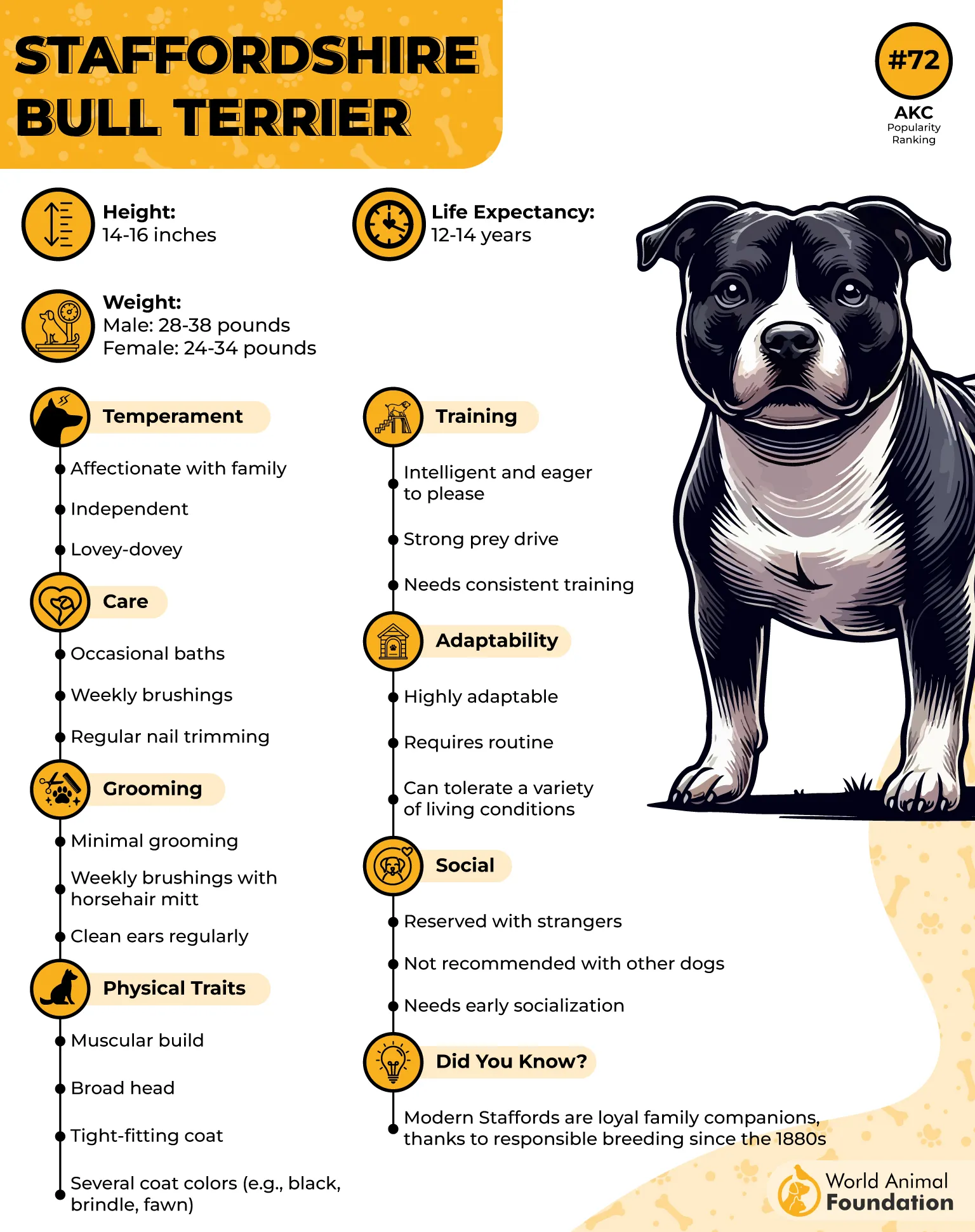
Originally bred in England as “chore dogs,” Staffies combine bulldog tenacity with terrier agility. That coat looked both intimidating and noble, especially in working-class UK streets where loyalty mattered more than looks.
Behaviorally, Staffies in blue coats are often noted for their calm demeanor and friendly eye contact, scientifically tied to good oxytocin bonding responses in dogs bred for tight human companionship.
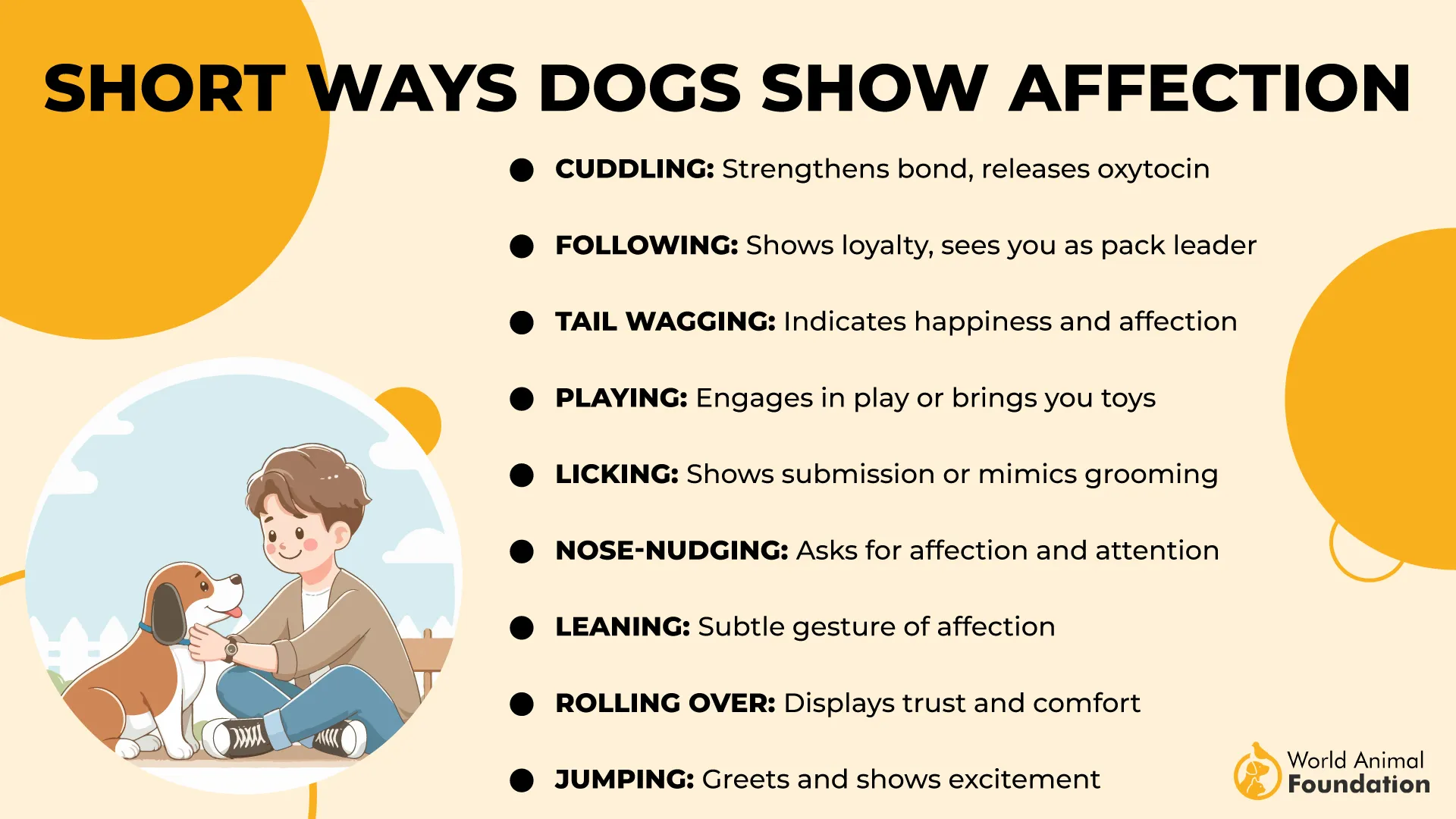
Socially, blue Staffies often stand out at dog shows and sales listings—the color just pops under lighting.
8. Poodle (Standard)

Standard Poodles with blue‑tinted grey coats look like trained unicorns. Though often seen in solid black or white, the dilution gene produces a grey‑blue shade in some lines. Their curly coat reflects light in unexpected ways—almost metallic at times.
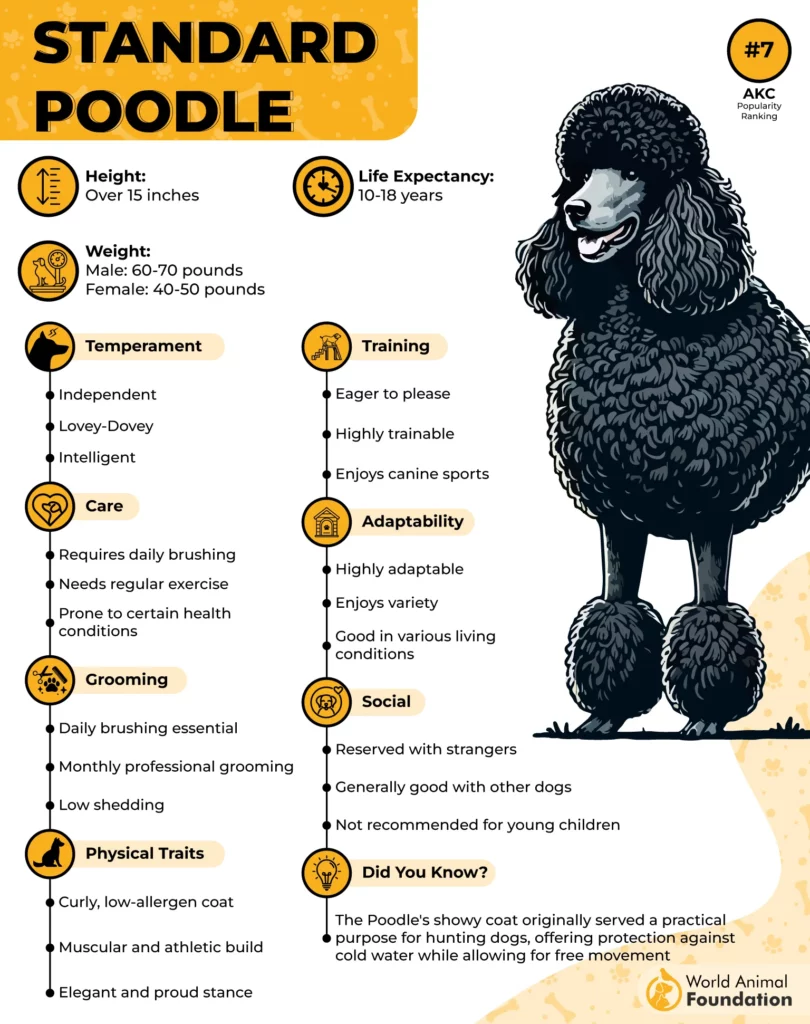
Historically bred in Germany and France as water retrievers, Poodles had functional clipped coats to prevent water drag. Grey‑blue versions evolved via dilute genetics—not always recognized in show rings but stunning in working lines.
Cognition-wise, they are among the most intelligent breeds, capable of learning routines, retrieving, and behaving elegantly. A blue‑grey Poodle prancing with poise? Iconic.
Modern reference: dock‑diving Poodles often have this coat—splashes of water glittering off their steel‑grey fur make viral video hits.
9. Old English Sheepdog
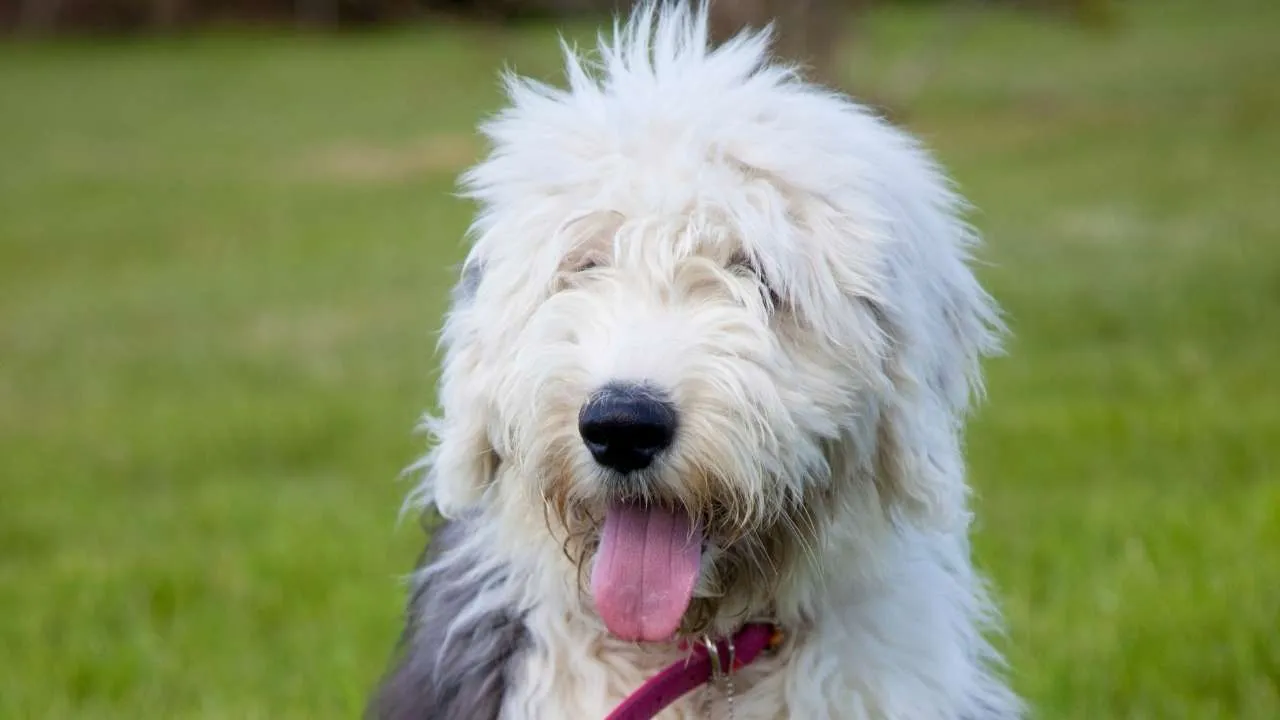
Yes, shaggy floofs can rock blue‑tinted grey too. Old English Sheepdogs often mature from black-and-white puppies into bluish-grey adults, especially in blue merle or dilute pattern.
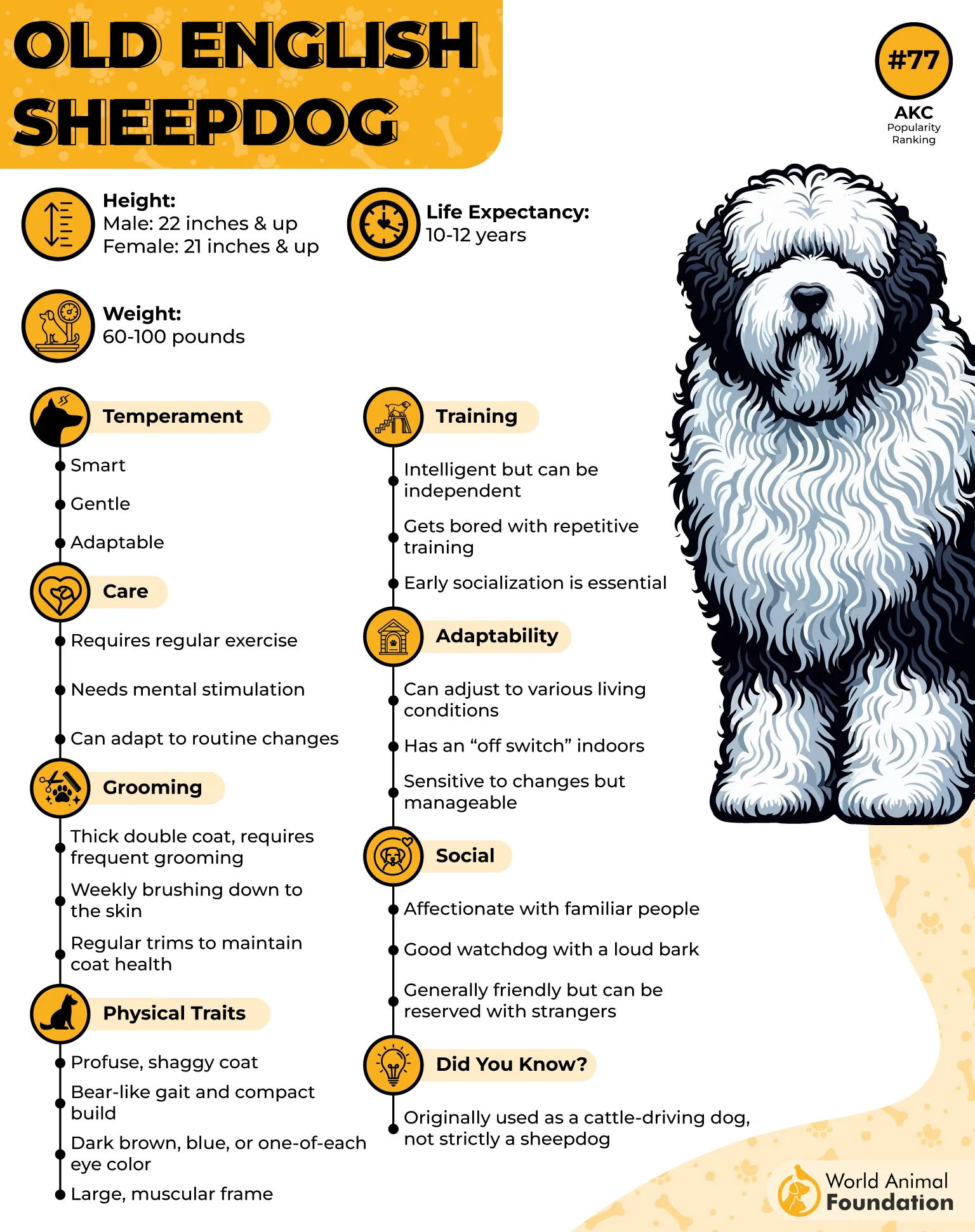
Originally developed in 1800s England as drover herding dogs moving livestock to market, their shaggy coats protected them in foggy fields. The grey‑blue tone helped them blend with misty pastures.
WebMD mentions they have a double coat of gray shades—long, harsh outer hair and soft undercoat—so their grey tones glow in daylight. Scientifically, melanin dilution slows with age, leading to color shifts from black puppy patches to silver haze—some even go nearly white.
A fun historical tidbit: the breed gained popularity after “Slumber,” an Old English Sheepdog, won Best in Show at Westminster in 1914. Grey coats have always been part of their “Bobtail” charm.
Conclusion
There you go—9 breeds that rock blue‑tinted grey coats like runway rebels: Weimaraner, Great Dane, Am Staff, Blue Lacy, Thai Ridgeback, Italian Greyhound, Staffordshire Bull Terrier, Standard Poodle, and Old English Sheepdog.
The Australian cattle dog (blue heeler), Catahoula leopard dog, German Shepherd, Kerry blue terrier, Irish wolfhound, Bearded collie, and Boston terrier also have blue coat color. Each flaunts a rare genetic twist, a historical backstory, and that steel‑blue vibe that turns heads.
Whether it’s hunting roots, water retriever heritage, or regal herding lines, these dogs merged function and fashion through genetics, plus a pinch of selective breeding. Their color doesn’t affect temperament, but it sure adds aesthetic swagger. Some can face minor issues like color dilution alopecia, but most live happy, healthy, and stylish lives.


